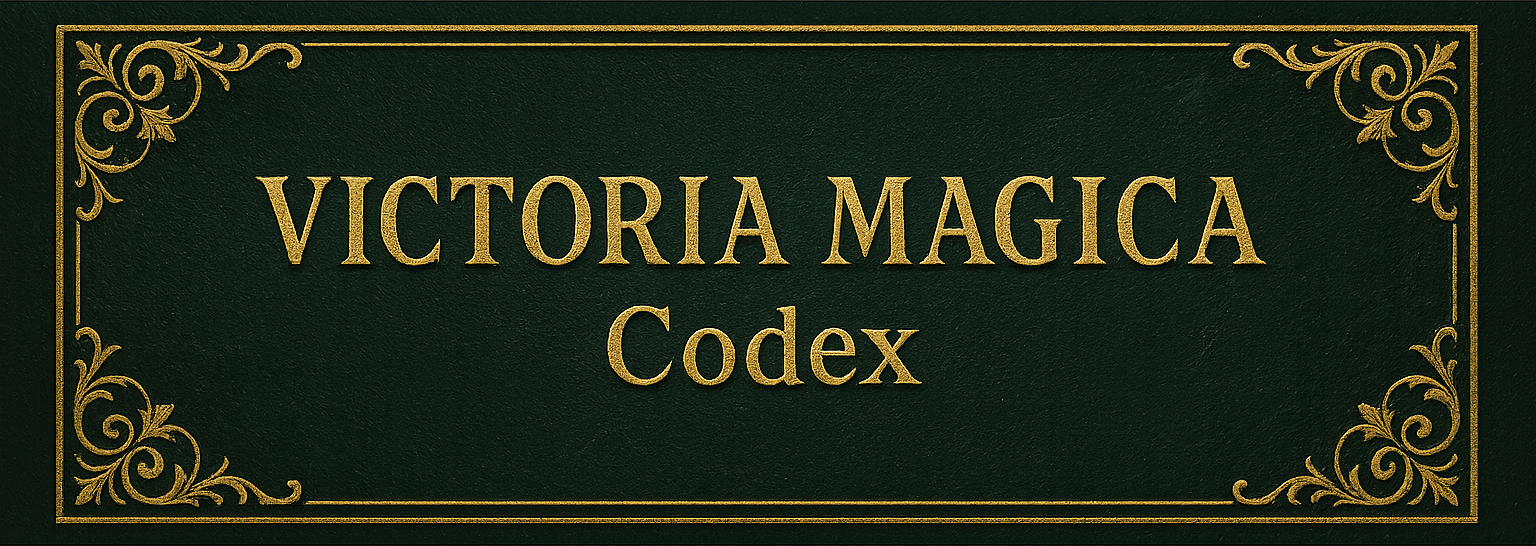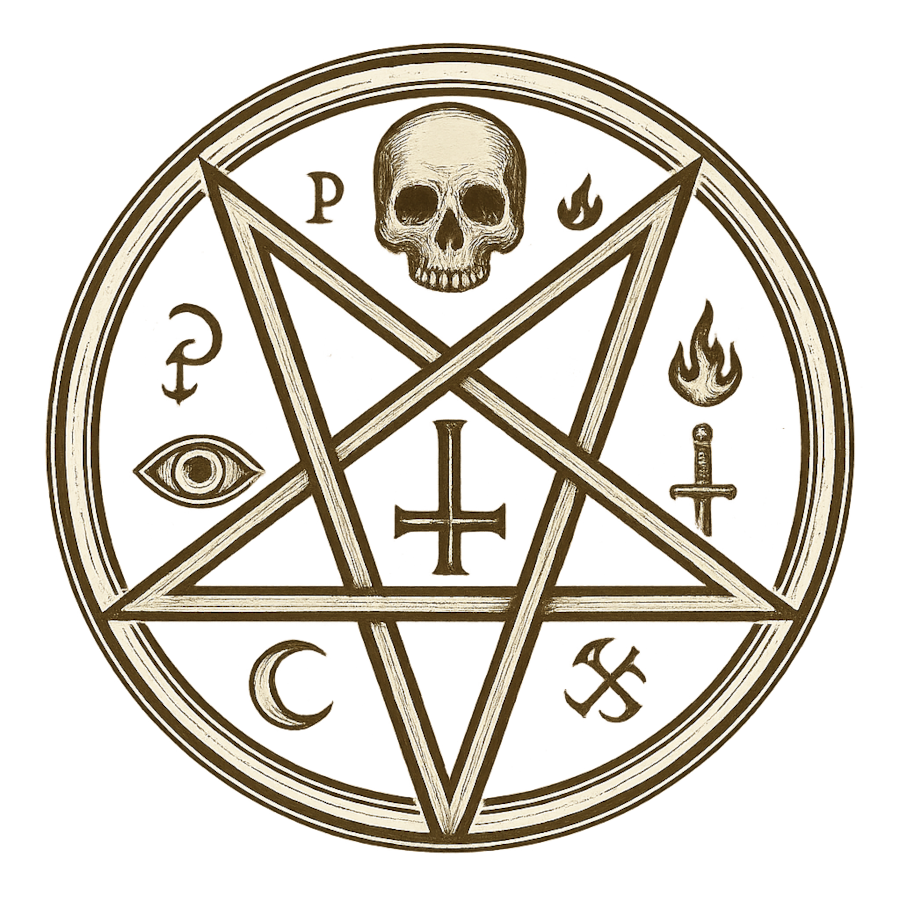Deletantism
⚠️ Content Warning
This article may contain mature themes, including homoerotic content, complex power dynamics, sexual encounters with vampires and anthropomorphic beings, as well as other adult material.
Reader discretion is advised.
TABLE OF CONTENTS is in the World Navigation
"A Magus dances with the universe. A Witch breaks into its cellar and lights it on fire."
— Professor Elsbeth Darnley, Royal Aetherological Society
In enlightened Britain of the year 1893, the unregulated and non-innate practice of magic by laypersons is formally categorised as Deletantism, or more colloquially: Witchcraft. Unlike the refined and disciplined arts of trained Magi, Witchcraft is seen as clumsy, dangerous, and biologically taxing. It is an act of theft – stealing power not from the cosmos, but from life itself.
While anyone with the correct ritual, words, and tool may perform Witchcraft, the cost is often lethal to the source of energy, grotesque in manifestation, and deeply frowned upon by both the scientific magical community and society at large.
Scientific Classification: "Deletantism"
Within academic and magical institutions such as the Royal Aetherological Society, Witchcraft is labelled Deletantism—from "deletant" (one who imitates or dabbles without mastery). It is not recognised as a legitimate magical school, but as a parasitic workaround.
Deletantism is studied more as a social and biological curiosity than a true discipline. Nevertheless, several scientists campaign to regulate or legalise its usage in desperate circumstances (e.g., battlefield medicine or death-row executions).
Origins & Traditions
Witchcraft is not a structured discipline, but rather an accumulation of crude magical practices developed independently across cultures. Most believe it originated among disenfranchised, non-gifted humans who sought access to magical power by any means. It is commonly passed through forbidden tomes, oral tradition, or experimentation. No formal tradition or academy recognises it.
Witchcraft requires three basic elements:
- A Focus – A wand, knife, amulet, or ritual object to direct the effect.
- A Source – A living creature whose life force is forcibly tapped or consumed.
- Will – The mental discipline to impose change.
Effects are often dramatic and spectacular—but crude, volatile, and energetically inefficient.
Subtypes or Branches
1. Black Witchcraft (Energy taken from others)
The most direct and violent form of Witchcraft. A creature (be it insect, animal, or human) is drained of life-force to fuel the desired effect. The victim perishes immediately.
- Examples: Curses, instant fire or ice effects, necrotic touch.
- Perception: Feared, prosecuted, outlawed.
2. White Witchcraft (Energy taken from oneself)
Practitioners choose to draw energy from their own vital essence, rather than inflicting death on others. This is often seen as morally superior—but the price is steep.
Over time, White Witches develop visible deformities known as Witch Marks—a slow transformation into the very archetype of the "witch" from folklore.
- Witcvh Marks include: Greying or greenish skin, hooked nose, warped spine, claw-like hands, yellowed eyes, or even facial warts.
- Perception: Pitied, sometimes tolerated in rural communities. Still discouraged by academics.
3. Mystika Carnalis (Sexual Witchcraft)
A unique form of Witchcraft that does not cause physical degradation or death. Instead, it harnesses the sexual energy released during the act of intimacy.
This energy, raw and potent, is channelled through a focus or symbol during climax to create magical effects. It is one of the few Witchcraft forms that can be used repeatedly without visible cost—except one: it causes eventual infertility in the practitioner.
- Notable Traits:
- Does not deform the body.
- Ideal for spells of passion, glamour, binding, and charm.
- Perception: Taboo, eroticised in occult circles, often conflated with succubus folklore.
Practice & Limitations
Hexerei may be performed by anyone who possesses a magical focus. It requires no natural affinity, but rather brute force: magic is torn from the world or living things. Its use is inherently unstable, dangerous, and often unpredictable. Prolonged practice without safeguards leads to mental breakdown, corruption, or death.
Signs & Symptoms
- Cracking or burning sounds during spellcasting
- Sudden withering of nearby flora or vermin
- Foul smells: ozone, blood, decay
- Physical changes over time: tremors, hair loss, skin thickening or lesions
8. Drawbacks & Risks
- Extraction of life energy is always required—resulting in death or suffering of the source
- Self-sacrifice warps the user physically and mentally
- High risk of spell failure or backlash
- Prolonged use leads to hallucinations, madness, sterility, or death
Cultural Reception
Hexerei is almost universally feared and banned. Users are persecuted, executed, or driven into hiding. Cults, fringe alchemists, and rogue scholars may practice it in secret. The Department of Esoteric Affairs maintains a blacklist and executes purges against known practitioners. Carnal Hexerei survives in libertine circles and underground sects.
Symbols, Tools & Focuses
- Pentagrams, bone-carved daggers, sacrificial blades
- Blood-drawn summoning circles, charms made of skin or bone
- Ritual tools often personalised: wands made of human bone, cursed relics, or bound familiars
Witchcraft
Bone-carved daggers
Sacrificial blades
Charms made of skin or bone




Comments